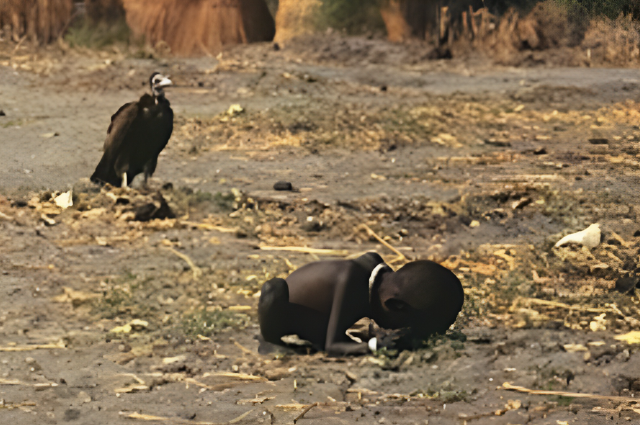
Photojournalism is an aspiring job for many, as it gives one liberty to showcase a fusion of artistry and truth-telling. Some perceive it as an art form, an instinctive expression capturing the shade of the human condition, while others view it as a profession, a means of brandishing the camera to unveil the pale realities of our world. on the other hand, it’s just another profession for the bread winners of the family.
This inherent divorce within photojournalism serves as a backdrop for a profound narrative, one intimately inscribed in the lens of Kevin Carter, a photojournalist whose work transcends mere visuals, delving into the heart of ethical dilemmas and the intricate layers of our shared humanity.
In the eyes of those who recognize photojournalism as an art form, it is more than a documentation of events; it is a form of visual poetry. The photographer becomes a storyteller, navigating through moments in time to distill the essence of the human experience. The camera, in this perspective, is not merely a tool but an extension of the artist's soul, an instrument that paints emotions on the canvas of collective consciousness.
Kevin Carter, a significant name in the world of photojournalism, stands as a pivotal figure whose lens captured the harsh realities of two critical chapters in history. Born on September 13, 1960, in South Africa, Carter's journey into photojournalism became synonymous with documenting not only images but the poignant narratives of a nation undergoing profound transformation.
Growing up against the backdrop of apartheid, an institutionalized system of racial segregation in South Africa, Carter found himself drawn into the ranks of the Bang-Bang Club. This group of photojournalists, including Carter, documented the tumultuous final years of apartheid. His lens became a powerful tool in exposing the brutality and injustices of this divisive period, painting a vivid picture of the struggle for equality.
The transition from the oppressive atmosphere of apartheid to the famine-ravaged landscapes of Sudan marked a profound shift in Carter's photographic narrative. The Sudanese famine of 1993, characterized by drought, political instability, and economic challenges, provided a new canvas for Carter's lens, one that would give rise to one of the most iconic and controversial photographs in the history of photojournalism.
"The Vulture and the Little Girl" captured by Carter in Sudan, crystallizes the complexities inherent in his work. The photograph, depicting a gaunt Sudanese child crawling toward a vulture, is haunting and deep. It encapsulates the desperation of the moment, highlighting the stark realities of famine. Yet, it also tossed Carter into a maelstrom of ethical scrutiny.
The photograph, awarded the Pulitzer Prize for Feature Photography in 1994, sparked debates and criticisms surrounding Carter's choices during and after the moment of capture. The ethical state of uncertainty was stark should Carter have intervened to aid the ailing child, or was his duty solely to document the unfolding tragedy? The image became a symbol not just of human suffering but of the ethical complexities that confront photojournalists on the front lines of crisis.
Tragically, the weight of these ethical dilemmas, coupled with personal struggles, took a toll on Kevin Carter. On July 27, 1994, at the age of 33, he ended his own life, leaving behind a legacy that continues to provoke contemplation on the role of the photojournalist in the face of human suffering.
Carter's work still is inspirational and idolized by many young and esteemed minds in the field of photojournalism.
his case reminds us to prioritise our social responsibilities and tells people that art shouldn't be done for just the sake of doing it. art is something volatile and cannot be finite, it’s something within and spiritual.
